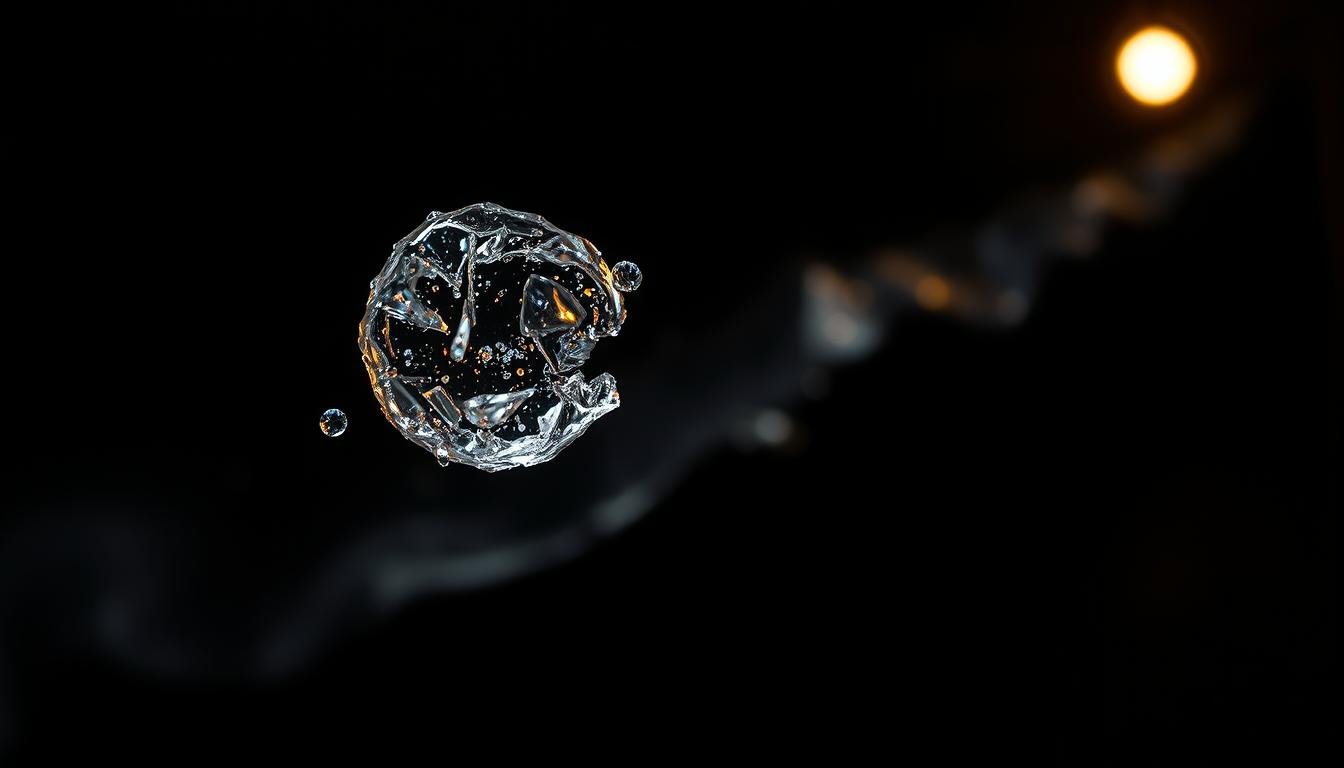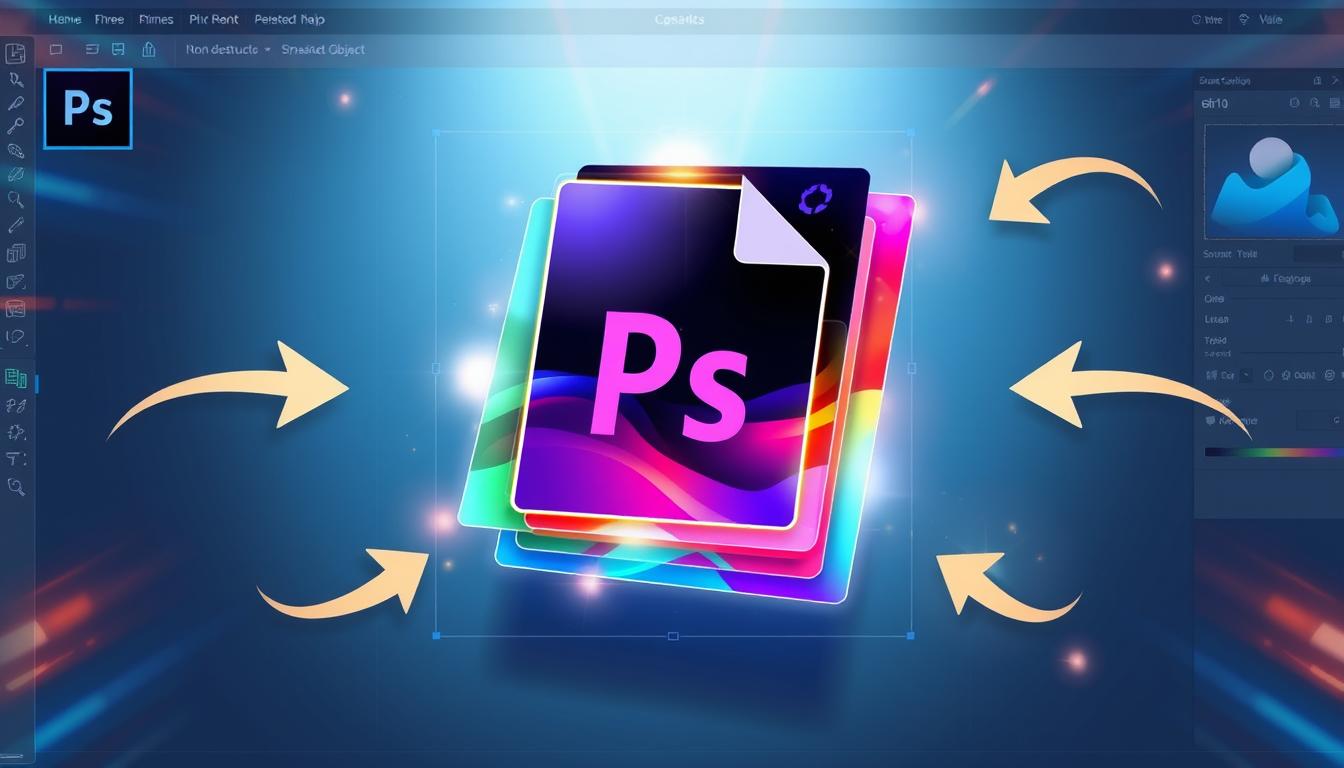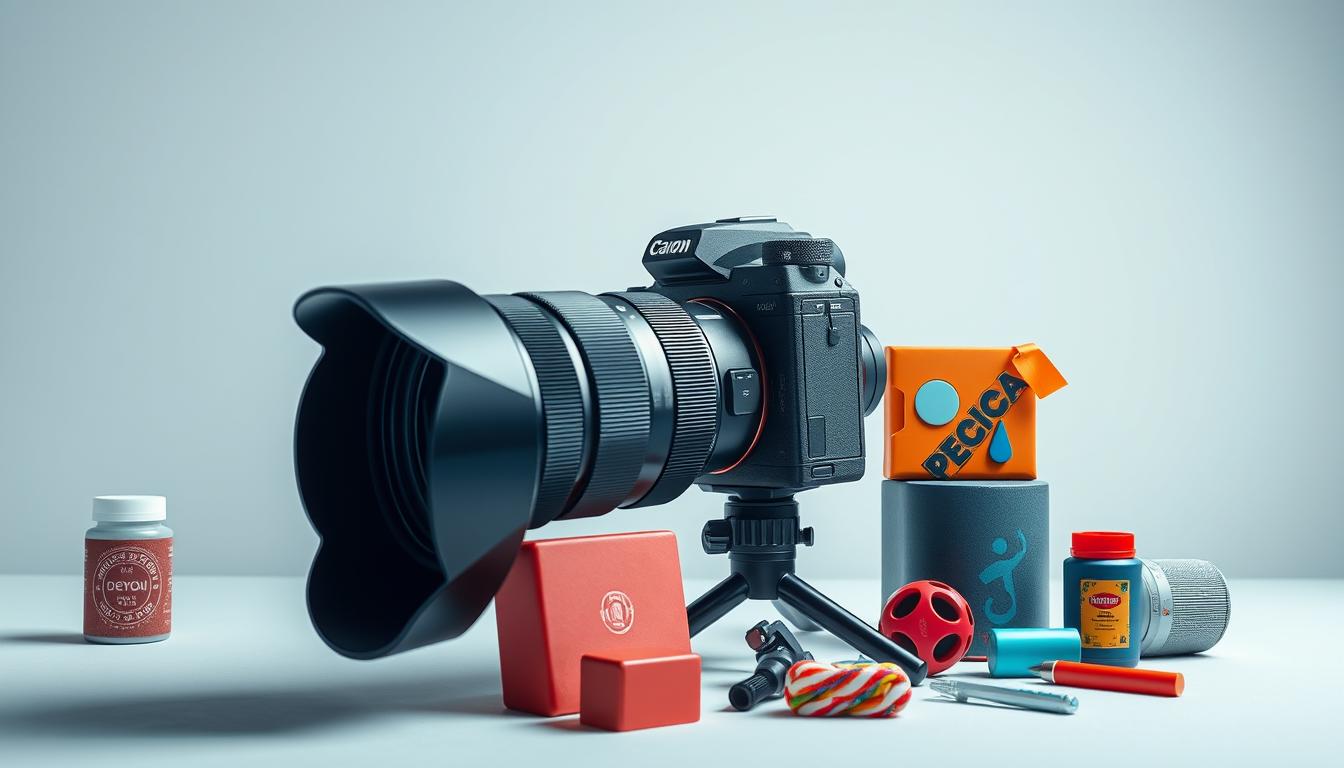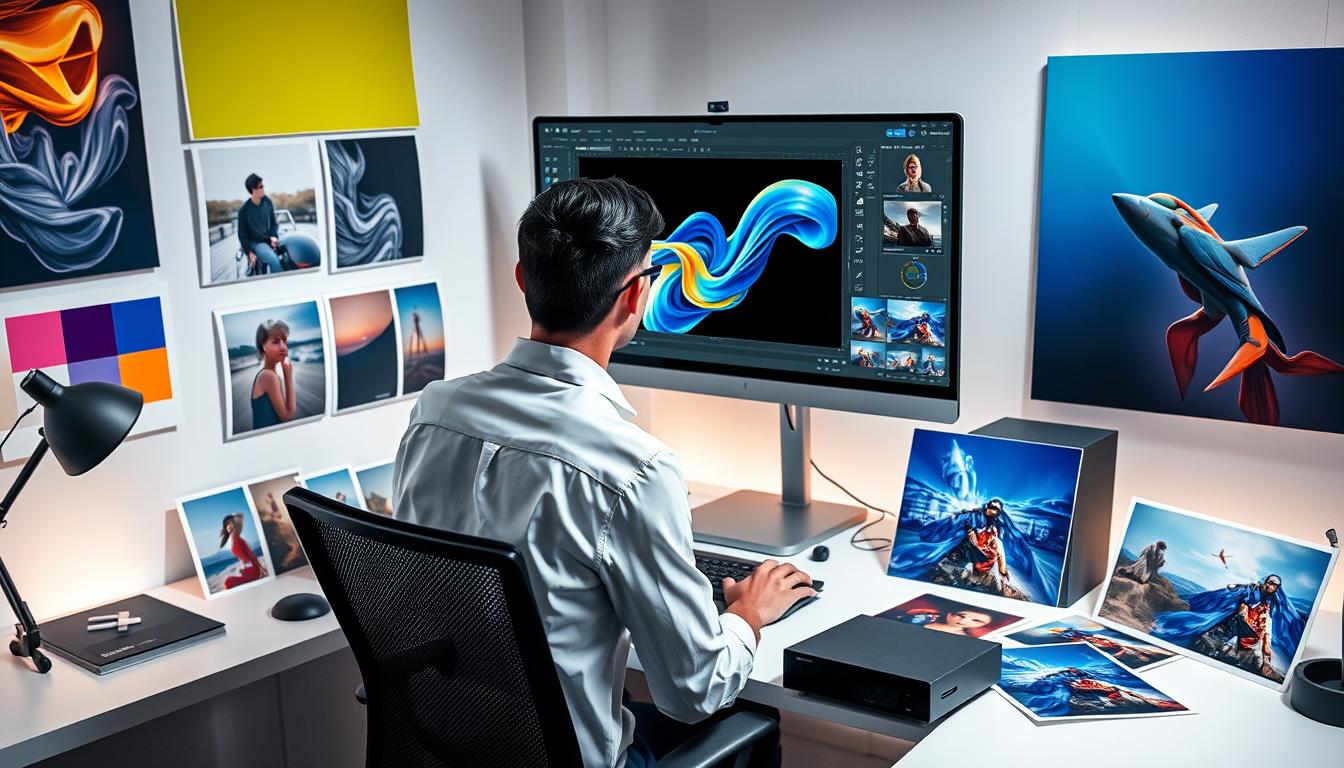Frozen motion photography captures fast movements and freezes them, adding drama and action. It’s popular in sports, wildlife, and action photography. It needs motion capture, photography skills, and the right camera.
Photographers use special equipment and techniques to get amazing frozen motion shots. This guide will dive into the world of frozen motion photography. We’ll cover camera gear, lighting, and how to edit photos.
Understanding Frozen Motion Photography
Frozen motion photography captures fast movements, adding drama and action to photos. It needs a good grasp of motion capture, photography techniques, and camera equipment. With these skills, photographers can make images that show energy and movement.
Photographers use special camera equipment for motion capture. This gear helps freeze fast subjects, making them sharp and clear. Techniques like panning and shutter drag add motion blur, enhancing the image.
Definition and Basic Concepts
Frozen motion photography is all about motion capture. It uses camera equipment to freeze fast movements, adding drama. Knowing photography techniques and camera equipment is key to making great images.
History of Motion Capture
The history of motion capture goes back to photography’s early days. Photographers used special camera equipment to capture fast movements. Over time, photography techniques have improved, leading to stunning images that show energy and movement.
Why Photographers Use This Technique
Photographers use frozen motion photography to capture fast movements and add drama. This technique helps them create images that show energy and movement. By mastering motion capture, photography techniques, and camera equipment, they can improve their skills and make high-quality images.
Essential Camera Equipment for Motion Freezing
To capture fast movements, photographers need the right camera equipment. They need a camera that shoots at high frame rates and has a quick shutter speed. A good lens is also key, as it helps freeze motion and adds sharpness. Plus, a tripod is needed to keep the camera steady and avoid shake.
There are many camera equipment options out there. Some top picks include:
- DSLR cameras with high frame rates
- Mirrorless cameras with fast shutter speed
- Prime lenses with wide apertures
- Tripods with sturdy construction
When capturing fast movements, ISO settings matter too. Lower ISOs can cut down on noise and enhance image quality. But, finding the right balance between ISO settings and shutter speed is crucial.
Investing in the right camera equipment and mastering shutter speed and ISO settings can lead to amazing photos. This will take your photography to new heights.
Camera Settings That Make Motion Freeze
To capture fast movements, photographers use special camera settings. Shutter speed, ISO settings, and aperture are key. Knowing how they work together is crucial for the right effect.
Shutter speed is vital for freezing motion. A quick shutter speed captures sharp images of moving things. But, a slower shutter speed can make things look like they’re moving, which is cool in some shots.
Shutter Speed Fundamentals
A shutter speed over 1/1000th of a second is needed for fast movements. But, the right speed depends on the subject and the look you want. ISO settings also matter, as they affect how sensitive the camera is to light. Use a low ISO for bright light and a high ISO for dark.
Aperture Considerations
Aperture is also important in motion freeze photography. It’s the size of the camera’s aperture, which lets in light. A big aperture (small f-stop number) makes the background blurry, while a small aperture (large f-stop number) keeps everything sharp.
Manual vs. Auto Mode
Photographers can use manual or auto mode for camera settings. Manual mode lets you control everything, like shutter speed and aperture. Auto mode lets the camera decide, which is handy but not as precise.
Manual mode is better for motion freeze because it gives you more control. This is why many photographers prefer it for this type of shot.
Lighting Techniques for Frozen Motion
Lighting is key in capturing the perfect frozen motion image. In sports photography, the right light can add drama and action. Natural light is often best, adding depth and dimension. But, artificial lights like strobes and continuous lights can also enhance the scene.
Some important lighting tips for frozen motion photography include:
- Using the golden hour for a warm, natural glow
- Experimenting with backlight to create a sense of depth
- Utilizing sidelight to add texture and interest to the image
In sports photography, the aim is to capture action and emotion. The right lighting techniques can make images striking and emotionally powerful. Whether using natural or artificial light, it’s all about experimenting to find what works best.
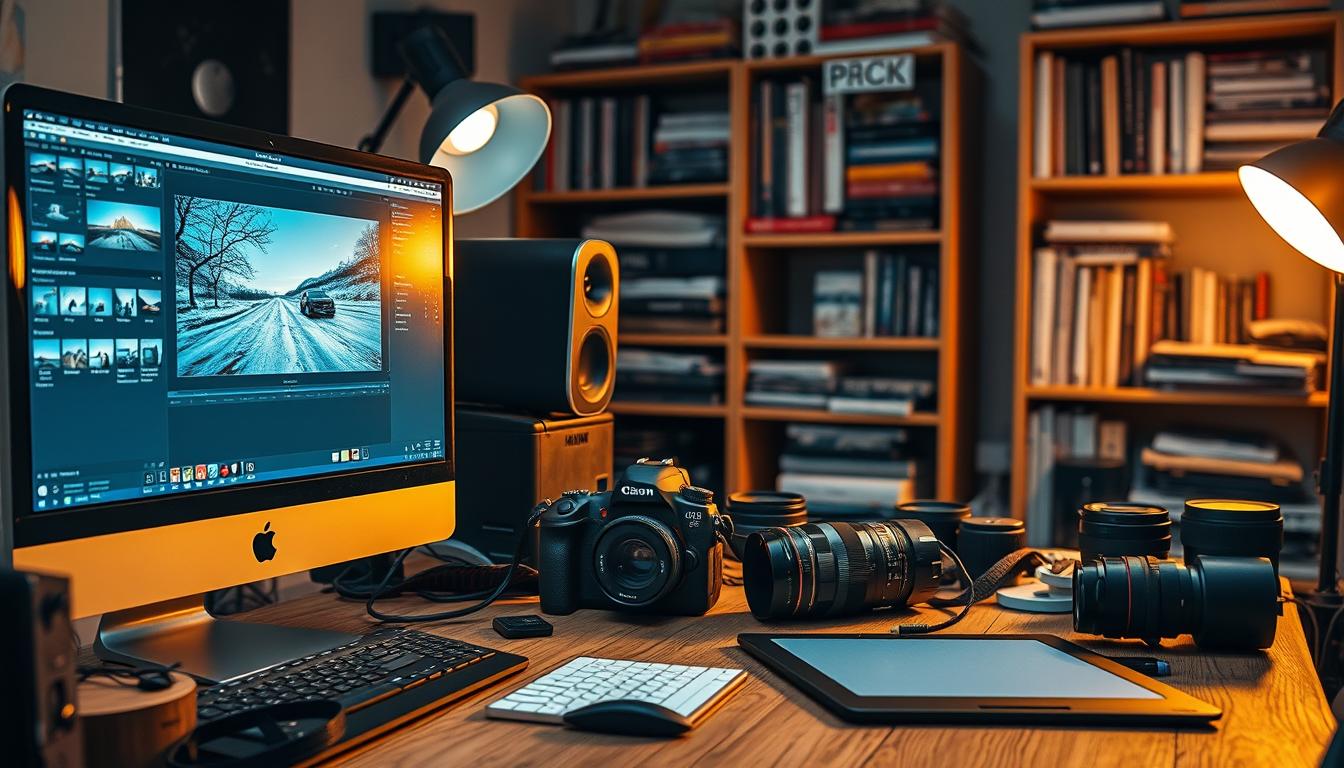
Mastering lighting techniques in frozen motion photography can elevate your images. Whether you’re shooting sports photography or other fast-paced subjects, the right lighting is crucial. It can turn a good shot into an unforgettable one.
Best Subjects for Motion Photography
Certain subjects are perfect for capturing motion. Sports photography can show drama and action, like a touchdown or slam dunk. Wildlife photography is also great, capturing fast movements like birds flying or animals running.
Water photography is another favorite, showing motion and flow. Photographers can freeze moments like waves, waterfalls, or splashing water. Some top subjects for motion photography include:
- Sports events, such as football or basketball games
- Wildlife, like birds or deer, in their natural habitats
- Water scenes, like ocean waves or river rapids
Choosing the right subject and using frozen motion can make images dynamic and engaging. Whether it’s sports, wildlife, or water photography, the key is to experiment and have fun.
The goal of frozen motion photography is to show movement and energy. So, don’t be afraid to get creative and try new things. With practice and patience, you can take stunning images that show your subject in a unique and captivating way.
Common Challenges and Solutions
Photographers often face challenges when using motion capture and photography. These issues can lower the quality of their images. It’s key to know the common problems and how to solve them.
Focus issues, lighting problems, and motion blur mistakes are common. These can be tough, but there are ways to fix them. For example, a fast shutter speed and a tripod can help with motion blur. Adjusting the camera’s autofocus can also improve focus.
Overcoming Focus Issues
Focus can be hard in fast-motion photography. The camera’s autofocus might not keep up. To solve this, try continuous autofocus or manual focus. This ensures your subject stays sharp.
Addressing Lighting Problems
Lighting can be a problem, mainly in dark places. To fix this, add external lights like flashes or strobes. You can also tweak your camera settings, like ISO or aperture, to let in more light.
Preventing Motion Blur Mistakes
To avoid motion blur, use a quick shutter speed and a tripod. Image stabilization, like optical stabilization or electronic stabilization, can also help. These methods reduce camera shake and blur.
By tackling these common issues, photographers can enhance their skills. They can then take top-notch images with motion capture and photography.
| Challenge | Solution |
|---|---|
| Focus Issues | Continuous autofocus or manual focus |
| Lighting Problems | External light sources or adjusted camera settings |
| Motion Blur Mistakes | Fast shutter speed, tripod, or image stabilization techniques |
Advanced Techniques for Creative Results
Exploring different photography techniques can lead to amazing images. Panning is one method where you move the camera with the subject. This creates a sense of motion and blur.
Using special camera equipment can also boost your photos. Camera rigs and jibs let you capture images from unique angles. This adds depth to your photos.
Some advanced techniques for creative results in frozen motion photography include:
- Using slow shutter speeds to create a sense of motion and blur
- Experimenting with different camera angles to add depth and interest to the images
- Utilizing specialized camera equipment, such as camera rigs and jibs, to capture unique perspectives
By using these advanced techniques, photographers can make their frozen motion photos stand out. They become visually stunning and creatively captivating.
| Technique | Description |
|---|---|
| Panning | Moving the camera in the same direction as the subject to create a sense of motion and blur |
| Slow Shutter Speeds | Using slow shutter speeds to create a sense of motion and blur |
| Specialized Camera Equipment | Utilizing camera rigs and jibs to capture unique perspectives and angles |
Post-Processing Your Frozen Motion Images
After you capture the perfect frozen motion shot, it’s time to enhance it. Photography techniques help refine your image, making it stunning. You can adjust exposure, contrast, color balance, and motion effects during post-processing.
Raw file processing is key in post-processing. It lets you tweak the image’s exposure, contrast, and color. This makes your image more dramatic and engaging. You can also use software to add blur and motion effects.
Raw File Processing
Raw file processing is vital. It lets you work with your camera’s raw data. Use software like Adobe Lightroom or Camera Raw to refine your image.
Enhancing Motion Effects
Enhancing motion effects is crucial. Use software like Adobe Photoshop to add blur and motion. This creates a dynamic effect in your image.
Color Correction Tips
Color correction is important. It helps balance your image’s colors. Use Adobe Lightroom to adjust colors and create consistency.
By using these techniques, you can make stunning frozen motion images. Experiment with different software and methods to find what works best for you.
| Post-Processing Technique | Description |
|---|---|
| Raw File Processing | Working with raw data from your camera to adjust exposure, contrast, and color balance |
| Enhancing Motion Effects | Creating a sense of blur and motion in your image using specialized software |
| Color Correction | Adjusting the color balance to create a sense of consistency in your image |
Inspiring Examples of Frozen Motion Photography
Frozen motion photography is a captivating genre. It can be applied to sports, wildlife, and water photography. By freezing motion, photographers create stunning images that tell stories and evoke emotions.
Award-winning shots in frozen motion photography are truly inspiring. These images show the photographer’s technical skills and deep understanding of their subject. For example, a perfectly timed shot of a soccer player in mid-air captures the game’s intensity and excitement.
Award-Winning Shots
Many award-winning shots come from wildlife photography. Photographers in this field spend years honing their craft. They wait for the perfect moment to capture an image that showcases their subject’s beauty and majesty.
Water photography techniques add complexity and interest to these images. The interaction between the subject and water creates unique and captivating effects.
Technical Breakdown
Breaking down award-winning shots can help photographers improve. Analyzing camera settings, lighting, and composition provides valuable insights. This knowledge can be applied to various photography fields, including sports, wildlife, and water photography.
Creative Interpretations
Creative interpretations of frozen motion photography inspire new approaches. Experimenting with different techniques and styles allows photographers to create unique and captivating images. Whether it’s water photography or sports photography, the possibilities are endless, leading to breathtaking results.
Conclusion: Mastering the Art of Frozen Motion
Mastering motion capture photography is a journey. It needs a deep understanding of photography techniques and camera equipment. You must be ready to practice, try new things, and keep learning.
Improving your skills in shutter speed, ISO, and aperture is key. This lets you control motion better. Adding creative lighting can make your images even more stunning. Always be open to new ideas and challenges.
Whether it’s sports, water splashes, or nature, mastering frozen motion opens up new creative paths. Stay curious, keep practicing, and let your passion guide you. This journey will be both rewarding and enriching.
FAQ
What is frozen motion photography?
Frozen motion photography captures fast movements and freezes them. It adds drama and action to photos. It’s popular in sports, wildlife, and action photography.
What camera equipment is essential for motion freezing?
You need a camera that shoots fast frames and has a quick shutter speed. A good lens and a tripod are also key for this technique.
What camera settings are important for freezing motion?
Shutter speed, ISO, and aperture are crucial. A fast shutter speed freezes fast movements. Low ISO and the right aperture help capture sharp images.
What lighting techniques are used in frozen motion photography?
Lighting is vital. Natural light is best, but artificial light can add drama. Strobes and continuous lights enhance images.
What are the best subjects for motion photography?
Sports, nature, and water are great subjects. They offer drama and action. Various techniques and equipment can capture these moments.
What common challenges do photographers face with frozen motion photography?
Focus, lighting, and motion blur are common issues. The right settings, lighting, and equipment can solve these problems.
What advanced techniques can be used for creative results?
Use specialized equipment and software for creative shots. Techniques like panning and tracking add uniqueness to images.
How can post-processing techniques enhance frozen motion images?
Raw file processing, motion effects, and color correction improve images. They add drama and action.
Where can I find inspiring examples of frozen motion photography?
Look at sports, wildlife, and water photography. Award-winning shots and creative ideas inspire and improve skills.

